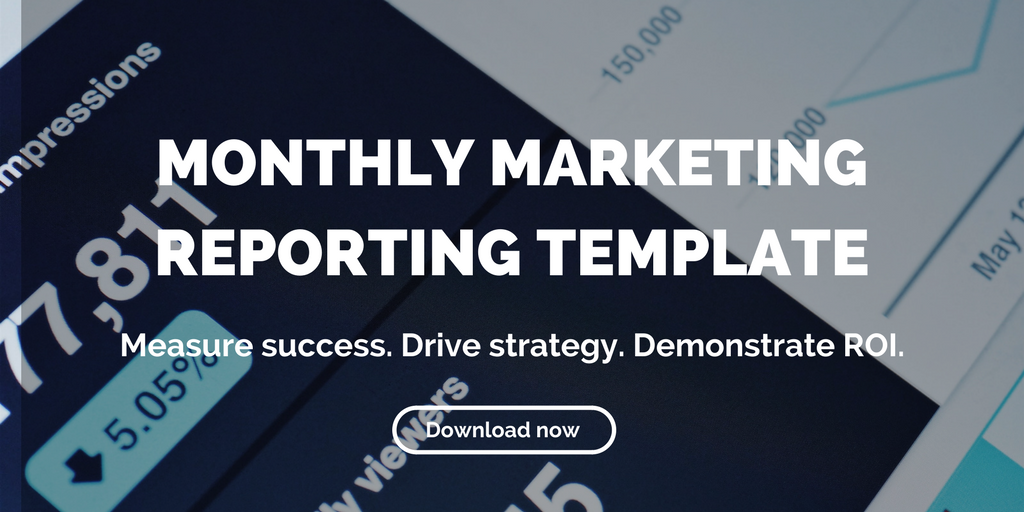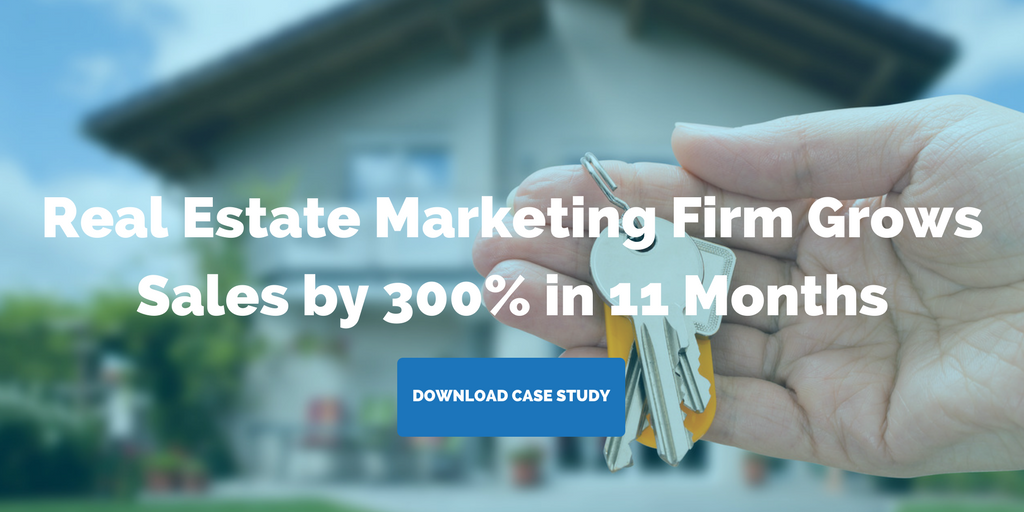Your search results for "C_HCADM_05 aktueller Test, Test VCE-Dumps für SAP Certified Technology Associate - SAP HANA Cloud Provisioning and Administration 👷 Öffnen Sie die Website ➡ www.itzert.com ️⬅️ Suchen Sie 「 C_HCADM_05 」 Kostenloser Download 👌C_HCADM_05 Online Prüfungen"

7 Ways Content Marketing Helps Sell Luxury Real Estate
Do you sell luxury real estate? Are you using content marketing? Here are 7 reasons you should.
It’s no secret that, when it comes to driving luxury real estate sales, content marketing works. According to Placester’s 2018 Real Estate Marketing Strategy Survey Report, 42.1% of real estate professionals surveyed plan to experiment with developing new types of content they haven’t tried. And a whopping 94.1% plan to focus on creating new and unique content for their websites.
So how exactly does content marketing help you sell luxury real estate? Here are 7 ways, just to name a few.
7 ways content marketing helps sell luxury real estate
1) Connect with qualified buyers.
Luxury buyers are highly likely to do purchasing research online. A robust digital and social media presence creates a virtual touch point to connect with affluent buyers.
2) Broaden brand awareness.
According to Sprout Social’s Consumer Engagement Index, which ranks industries by engagement from customers on social media, the real estate industry is second overall in terms of inbound engagement relative to audience size. As hyper-connected buyers engage with your relevant, quality content online, they share with their networks, and your content starts working for you exponentially.
3) Drive traffic to your property website.
Since 93% of all online experiences begin with a search engine, and 75% of searchers don’t click beyond the first page of search results, SEO is crucial for driving traffic to your property’s page. As search engine algorithms evolve, quality content is more and more important in making sure buyers find your property among top results.
4) Communicate real-time updates to potential buyers.
Through social media, particularly through the use of video content or live stories, you can get real-time updates to luxury buyers about project timelines, availability, construction progress, neighborhood news, and promotions.
5) Generate leads.
Content marketing helps drive qualified buyers to your site. According to a spokesperson for New York City-based Corcoran Real Estate Group, since adopting a robust content marketing strategy, “the quality of the referral traffic back into our main website has significantly improved. And not only are we seeing more traffic coming in, but visitors coming in from social media sites are staying longer and looking at more things.”
6) Nurture leads.
Content marketing — particularly a well-planned, automated email strategy — is a highly efficient and effective way to develop relationships with buyers at every stage of the sales process. HubSpot recently reported that businesses using marketing automation to nurture leads received a 451% increase in qualified leads. That’s right: 451%.
7) Sell your neighborhood.
Blog content focused on neighborhood amenities, seasonal recreational activities, area restaurants, etc. can help highlight factors that make your properties attractive to affluent buyers.
As Fronetics’ Director of Strategy Jennifer Hart Yim writes, “Content marketing is a new approach to an old strategy — one that’s putting real estate marketers in charge of the way potential buyers interact with their properties.”
Do you use content marketing to sell luxury real estate?
Related posts:
- 4 Ways a Blog Can Help You Sell Real Estate
- Social Media Trends for 2018 Real Estate Marketers Need to Know
- What Metrics Should You Track in Real Estate Marketing?
Your search results for "C_HCADM_05 aktueller Test, Test VCE-Dumps für SAP Certified Technology Associate - SAP HANA Cloud Provisioning and Administration 👷 Öffnen Sie die Website ➡ www.itzert.com ️⬅️ Suchen Sie 「 C_HCADM_05 」 Kostenloser Download 👌C_HCADM_05 Online Prüfungen"

5 Luxury Real Estate Brands that Use Content Marketing to Sell Property
Some of the biggest names in luxury real estate use content marketing to sell property.
Content marketing and luxury real estate are a match made in heaven. It’s an extremely powerful tool to attract visitors, convert them into leads, and convert leads to deals.
That’s largely because real estate buyers — especially luxury real estate buyers — are more connected than ever before. They have a proliferation of digital tools available to them with which to make purchase decisions. Smart real estate brands understand this reality and can use it to their advantage. How? It’s called content marketing.
Developers use content marketing to sell luxury real estate by creating high-quality, original content that attracts potential buyers searching the internet. It helps them grow brand awareness, drive traffic to the property website, and generate and nurture leads.
To give you some inspiration, here are 5 luxury real estate brands who have seen their sales transform as a result of adopting a content marketing strategy.
5 luxury brands to use content marketing to sell property
1) Corcoran Real Estate Group
Corcoran Real Estate Group has embraced content marketing and seen significant benefits. The New York City-based real estate brand increased their social media efforts and started posting two blog posts a week.
A spokesperson for the company says, “The main thing we’ve seen is that the quality of the referral traffic back into our main website has significantly improved. And not only are we seeing more traffic coming in, but visitors coming in from social media sites are staying longer and looking at more things — something we had also seen with search engines, but not in such large numbers.”
2) Long & Foster
Long & Foster is using a beautifully designed e-magazine to showcase luxury properties through an extensive online campaign targeting luxury clients. The online campaign drives traffic to the e-book and the website.
3) William Lyon Homes
William Lyons Homes connects available luxury properties to over 6,000 people through a multitude of social media platforms. This residential home builder links social followers to relevant articles, outside press coverage, and traditional marketing resources that serve to build on the lifestyle brand of each property.
4) Extell
Like Corcoran, Extell recognizes the value of blog content to attract visitors and nurture leads. The New York firm uses its blog to highlight not only its building with luxury condo units for sale, but also additional relevant information such as neighborhood amenities, seasonal local weather, and area restaurants.
5) Millennium Partners
Millennium Partners sells luxury real estate in the hottest markets across the United States. The firm has embraced content marketing as part of their overall marketing strategy. Millennium Tower’s Facebook page not only shares construction progress, sales information, and related press coverage, but neighborhood amenities, industry trends, and an array of visual content that’s more often than not shared widely by followers.
These are just a few of the many luxury brands that use content marketing to sell real estate. They’re meeting buyers where they are — in the digital space. If you’re not there, too, you’re missing out.
Related posts:
- 7 Ways Content Marketing Helps Sell Luxury Real Estate
- Social Media Trends for 2018 Real Estate Marketers Need to Know
- Social Media Can Be a Strategic Weapon in Real Estate Marketing
Your search results for "C_HCADM_05 aktueller Test, Test VCE-Dumps für SAP Certified Technology Associate - SAP HANA Cloud Provisioning and Administration 👷 Öffnen Sie die Website ➡ www.itzert.com ️⬅️ Suchen Sie 「 C_HCADM_05 」 Kostenloser Download 👌C_HCADM_05 Online Prüfungen"

PPC 101: The Basics of Pay-Per-Click Advertising
Discover the power of PPC marketing and how it can be used to get in front of more people without spending a fortune on leads.
Highlights:
- PPC means that you’re not going to spend a fortune to get your luxury property in front of potential renters and buyers.
- PPC allows you to customize the cost of what you spend per click based on the size of the ad, the prominence on the site, and how popular the website is.
- You’ll spend less per lead using PPC marketing, which is why it is one of the more popular paid marketing plans available.
PPC marketing has been around for a while. Whether you know a little or a lot, we’re here to tell you more. If you’ve thought about using PPC to market your business, we’re here to help.
Let’s start by learning what PPC is and get a basic understanding of how this form of advertising can work for you.
What is PPC?
PPC stands for pay-per-click. It means that you’re not going to spend a fortune to get your luxury development in front of potential renters and buyers. Instead, you’re only going to pay for the clicks that are actually made to your landing page.
When you’re trying to figure out what type of marketing you want to use, PPC works because it’s paid. It ensures that you reach people who you wouldn’t ordinarily see your brand. Particularly when you’re tapping into a new niche, it can be beneficial to spend money because it will make it possible to get the leads that you need.
When it comes to gaining marketing leads, there are several forms of marketing that can be beneficial. This includes a great-looking website, social media, and paid advertising, which should include PPC.
How does PPC work?
PPC is so much more than paying to have your ad on a particular website. You don’t want to spend thousands of dollars to put your ad on a website only for it to sit there without traffic. PPC allows you to customize the cost of what you spend per click based on the size of the ad, the prominence on the site, and how popular the website is.
There are different types of PPC, such as search ads and display ads. This determines where your ad is going to go. A variety of ad networks will make it easy for you to find a home for your ads. Google Ads is one of the most popular ones that you can use. Bing and Microsoft have their own versions, too. With display ads, you’re able to choose the graphics as well as where the ad leads to, whether it’s a homepage or a specific landing page.
You only pay when someone clicks on the ad. If your ad is shown to 1,000 people and only 10 people click on it, the only expense is the cost of 10 clicks. This ensures that the overall marketing cost is lower. You’ll spend less per lead using PPC marketing, which is why it is one of the more popular paid marketing plans available.
Particularly within the luxury development industry, the cost per lead is going to be a little higher while still allowing you to get a great return on investment. Some keywords will cost more than others. Further, where the keywords are being placed can cost more.
A budget can be created to stay in control of what you spend. The cost is usually identified as per day or per month. Once you have reached your allotted budget for the timeframe, the ad network will turn your ads off so that no more money is spent.
Related posts:
- Paid Social Advertising: Why Your Property Should Invest in Lead Ads
- How Pay-Per-Click Helped This Property Get 54 Leads
- Paid Digital Advertising: A Beginner’s Guide for Real Estate Marketers
Your search results for "C_HCADM_05 aktueller Test, Test VCE-Dumps für SAP Certified Technology Associate - SAP HANA Cloud Provisioning and Administration 👷 Öffnen Sie die Website ➡ www.itzert.com ️⬅️ Suchen Sie 「 C_HCADM_05 」 Kostenloser Download 👌C_HCADM_05 Online Prüfungen"

Google Analytics for Real Estate Marketers – 4 Steps to Get Started
Google Analytics is an extremely effective tool for real estate marketers to gain insights and shape strategy. These four tips will help get you started.
Highlights:
- Start by choosing what metrics to track.
- Figure out what works and what doesn’t.
- Paint a picture of your audience using hard data.
When it comes to gaining insights into real estate leads, Google Analytics is one of the most powerful tools out there right now. This robust, comprehensive, analytical tool determines how web users are interacting with your digital assets, including social media. The data that Google Analytics for real estate provides gives you invaluable insights into how your audience is interacting with your content, as well as how your content is performing over time.
Because this tool is extremely comprehensive, the options can be overwhelming at first glance. Understanding how to properly deploy this resource, and the metrics it provides, is your best bet for delivering value to your target audience, and effectively nurturing leads.
Here are four steps to get your marketing efforts started using Google Analytics for real estate.
1. Decide which metrics to track and identify key metrics
When you first start using Google Analytics, it’s easy to be overwhelmed by the sheer number of choices available to you for analyzing your real estate website visitors’ activity. It can seem tempting to track every available metric, gaining huge amounts of data. But your time and resources are much better spent if you take a step back and identify the right marketing reports for your real estate business.
As a benchmark, Phase 3 Enterprises suggests that real estate marketers track these six reports:
- Channel Report
- Source and Medium Reports
- Users Flow Report
- Frequency and Regency Reports
- Location Report
- Age and Gender Reports
Once you’ve chosen which metrics your real estate business should be tracking, it’s time to identify two or three metrics that will be your touchstones. These are the metrics that are critically important to the performance of your website and should monitored and analyzed regularly.
2. Start with the big things
Is there a page on your website that gets a large amount of traffic? That’s where you should be concentrating. Use key metrics to determine why that content is specifically intriguing to your users, and what led visitors to click and spend time there. For example, if one piece of content on your site outperforms another, ask yourself questions like:
- Does a higher click-through rate correlate with timing of emails sharing the content, social media posts, etc.?
- What are the top traffic sources for high performing content?
- How long are users spending on your content?
You get the picture. In short, if you identify the right questions to ask, Google Analytics for real estate will offer you the data to answer them—in turn giving you the tools to optimize your digital assets.
3. Find out where your website traffic is coming from
In a perfect world, users are visiting your site from multiple sources, instead of a single or just a few traffic streams. Gaining an understanding of where your traffic is coming from lets you devote resources to top-performing sources and adjust your efforts where they aren’t gaining optimal results.
Select “Overview” under the “Acquisition” menu to determine how much of your traffic is organic, social, from referrals, etc. The Channel Report will give you further details on where your visitors are coming from, as well as information about how traffic from various sources engages with your site.
4. Build an audience profile
Ultimately, one of the most important things Google Analytics can capture for you is a picture of your audience. This includes where they’re located, how they engage with your website, demographic data like age, and other buyer preferences. Some key audience characteristics to be on the lookout for:
- How much of your audience is new visitors vs. returning visitors?
- What devices is your audience using to access your digital assets?
- Where are your visitors geographically located?
The more you use the data to understand your audience, the more you’ll be able to optimize your digital assets to meet their needs and build and expand your audience base.
The bottom line
Google Analytics is your superpower when it comes to real estate marketing. No other tool gives you more comprehensive insights into your audience behavior, content performance, overall site performance, and more. Start using this tool today, and let data drive your real estate marketing efforts.
Related posts:
- How to Measure Social Media ROI with Google Analytics for Real Estate
- What Metrics Should You Track in Real Estate Marketing?
- How Pay-Per-Click Helped This Property Get 54 Leads
Your search results for "C_HCADM_05 aktueller Test, Test VCE-Dumps für SAP Certified Technology Associate - SAP HANA Cloud Provisioning and Administration 👷 Öffnen Sie die Website ➡ www.itzert.com ️⬅️ Suchen Sie 「 C_HCADM_05 」 Kostenloser Download 👌C_HCADM_05 Online Prüfungen"

6 Luxury Real Estate Trends to Keep an Eye On
From security and privacy measures to wellness amenities, here are six luxury real estate trends for marketers to take note of.
Smart home technology, high-level amenities, and emphasis on security — those are just some of the luxury real estate trends that will shape the market this year and beyond.
Here’s what you need to know, boiled down to a 5-minute read.
Overview of the luxury real estate market trends in Boston
The luxury real estate market is changing rapidly due to technology that allows for increased consumer mobility. More and more buyers are able to tour homes virtually, giving them access to properties around the clock. Affluent buyers have started to expand the ownership of property beyond their historical locations, branching into new areas and even across state lines.
And let’s not forgot about millennials. While Baby Boomers still possess more current wealth, younger buyers continue to grow tremendous spending potential. That is why they have become a crucial market segment for luxury real estate agents.
Luxury real estate trends to look for
Similar to other industries, the real estate world is driven by demand. In fact, the nationwide average selling price for luxury properties increased towards the end of 2018 despite increased mortgage rates. But several factors remain constant: the trends and features that come with high-end homes. Here are the most popular trends.
1. Smart homes
Connectivity and convenience go hand in hand in luxury real estate. A home equipped with the latest in digital technology is a statement of wealth and modernity. The smart home does not only benefit the environment but deliver financial benefits to the owner as well. For all the developments with smart locks, smart thermostats, and more, we are only seeing the beginning of the smart home revolution.
2. Advanced security
The affluent home buyers spare no expense to ensure their lives and items remain secure. From hiring architects who conceal houses to scraping their properties off the grid, this market segment invests heavily in security. And more advanced features and products will hit the market in the next few months.
3. Focus on privacy
In addition to security, buyers at this price point also value privacy — and they are willing to spend big bucks to achieve that sense of complete seclusion. If you acquire a home for $5 million, you do not expect it to be visible to neighbors or have anyone from the street walk to your front door. Buyers want homes with gates, hedges, and walls, but not that big chain link fence. Aesthetically pleasing privacy features add a different layer to it.
4. Guest suites
Most luxury buyers are embracing the trend of guest suites. The suite does not have to be detached. It can sit right off the garage downstairs or be equipped with an en-suite bathroom to be used by visiting family or friends, as well as the live-in maid or nanny. Buyers also prefer extra space and rooms for home offices, workout rooms, or a gym.
5. Swimming pools, particularly smaller ones
A pool is one of the key expectations in any luxury property. However, few people want the pool to take up the entire backyard. Instead, home buyers may opt for a smaller plunge pool or a “glorified jacuzzi.” With the construction of big homes on small lots, the trend makes perfect sense.
6. Amenity-rich homes
Customized libraries, wine cellars, yoga roof decks, serenity spaces — affluent buyers have moved beyond private gyms. And developers are responding accordingly, adding wellness amenities to new projects. Eco-friendly features have also begun to play a more significant role with buyers specifically searching for LEED–certified buildings.
What trends have you noticed in luxury real estate?
Related posts:



